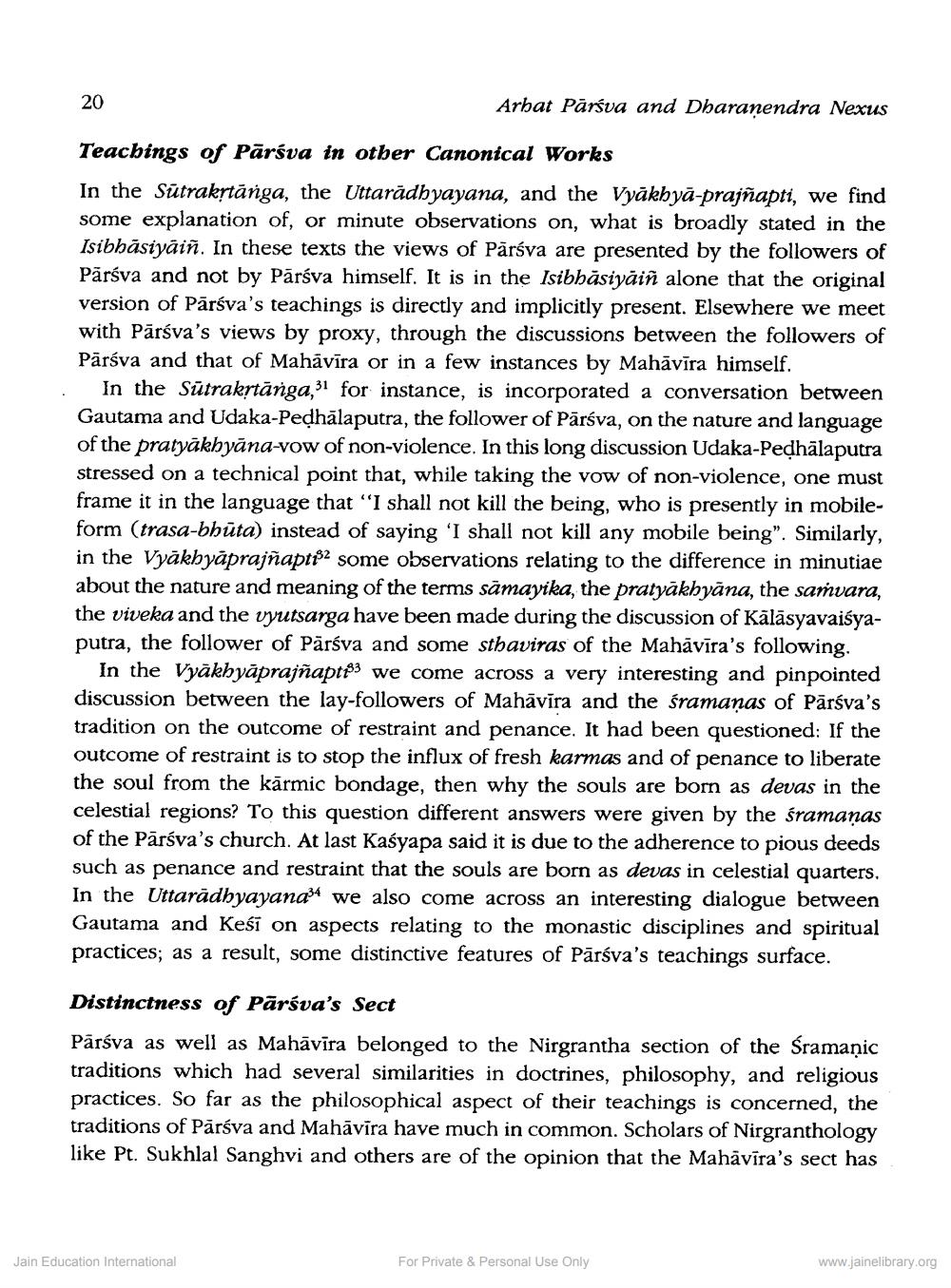________________
20
Arbat Pārsva and Dharanendra Nexus
Teachings of Pārśva in other Canonical Works
In the Sūtrakrtānga, the Uttarādhyayana, and the Vyākhyā-prajñapti, we find some explanation of, or minute observations on, what is broadly stated in the Isibhāsiyāiñ. In these texts the views of Pārsva are presented by the followers of Pārsva and not by Parsva himself. It is in the Isibhāsiyain alone that the original version of Pārsva's teachings is directly and implicitly present. Elsewhere we meet with Pārsva's views by proxy, through the discussions between the followers of Pārśva and that of Mahāvīra or in a few instances by Mahāvīra himself.
In the Sūtrakrtānga,31 for instance, is incorporated a conversation between Gautama and Udaka-Pedhālaputra, the follower of Pārsva, on the nature and language of the pratyākhyāna-vow of non-violence. In this long discussion Udaka-Pedhālaputra stressed on a technical point that, while taking the vow of non-violence, one must frame it in the language that "I shall not kill the being, who is presently in mobileform (trasa-bhūta) instead of saying 'I shall not kill any mobile being". Similarly, in the Vyākhyāprajñapt82 some observations relating to the difference in minutiae about the nature and meaning of the terms sāmayika, the pratyākhyāna, the samvara, the viveka and the vyutsarga have been made during the discussion of Kālāsyavaisyaputra, the follower of Pārsva and some sthaviras of the Mahāvīra's following.
In the VyākhyāprajñaptP3 we come across a very interesting and pinpointed discussion between the lay-followers of Mahāvīra and the śramanas of Pārśva's tradition on the outcome of restraint and penance. It had been questioned: If the outcome of restraint is to stop the influx of fresh karmas and of penance to liberate the soul from the kārmic bondage, then why the souls are born as devas in the celestial regions? To this question different answers were given by the śramanas of the Pārsva's church. At last Kaśyapa said it is due to the adherence to pious deeds such as penance and restraint that the souls are born as devas in celestial quarters. In the Uttaradhyayana?4 we also come across an interesting dialogue between Gautama and Keśī on aspects relating to the monastic disciplines and spiritual practices; as a result, some distinctive features of Pārsva's teachings surface.
Distinctness of Pārsva's Sect Pārśva as well as Mahāvīra belonged to the Nirgrantha section of the śramanic traditions which had several similarities in doctrines, philosophy, and religious practices. So far as the philosophical aspect of their teachings is concerned, the traditions of Parsva and Mahāvīra have much in common. Scholars of Nirgranthology like Pt. Sukhlal Sanghvi and others are of the opinion that the Mahavira's sect has
Jain Education International
For Private & Personal Use Only
www.jainelibrary.org




